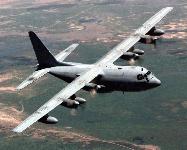
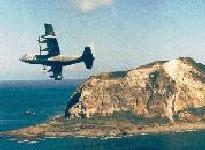
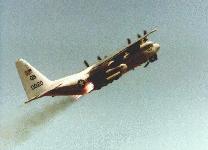
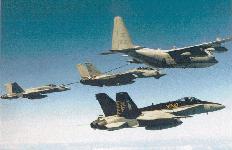
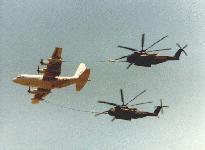
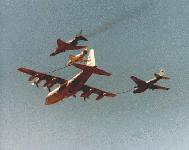
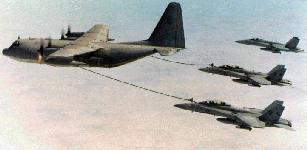
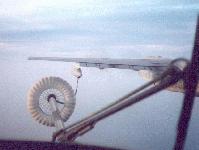

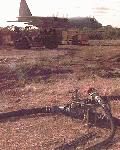
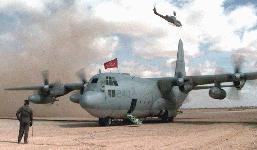



Specifications | |
| Primary function | In-flight refueling; tactical transport |
| Manufacturer | Lockheed |
| Power plant | Four Allison T56-A-16 engines |
| Power | 4,910 shaft horsepower per engine |
| Length |
Aircraft: 97 feet, 9 inches (22.16 meters) Cargo compartment: 41 feet (12.49 meters) |
| Width of Cargo compartment | 10 feet, 3 inches (3.12 meters) |
| Height |
Aircraft: 38 feet, 4 inches (11.68 meters) Cargo compartment: 9 feet (2.74 meters) |
| Wing span | 132 feet, 7 inches (40.39 meters) |
| Maximum takeoff weight | 175,000 pounds (79,450 kilograms) |
| Ceiling | 30,000 feet (9,140 meters) |
| Speed | 315 knots (362.25 miles per hour) |
| Operating weight | 83,300 pounds (37,818 kilograms) |
| Total fuel capacity |
KC-130T and KC-130: 13,280 gallons (50,331 liters)/86,320 pounds (32,715 liters) KC-130F: 10,183 gallons (38,594 liters)/ 66,190 pounds (25,086 liters) |
| Range |
Tanker mission: 1000 nautical mile (1150 mile) radius with 45,000 pounds of fuel (20,430 kilograms) (KC-130R/T) Cargo mission: 2875 nautical miles (3306.25 miles) with 38,258 pounds (17,369 kilograms) of cargo (KC-130R/T) or 92 combat troops or 64 paratroopers or 74 litters |
| Landing distance | Less than 2,600 feet |
| Crew | 2 pilots, 1 navigator/systems operator, 1 flight engineer, 1 first mechanic, 1 loadmaster (total of 6) |
| In | |
| troduction date |
KC-130F: 1962 KC-130R: 1976 KC-130T: 1983 |
| Unit Replacement Cost | $37,000,000 |
| Inventory |
Active: 37 KC-130Fs and 14 KC-130Rs (51 total) Reserve: 24 KC-130Ts |










